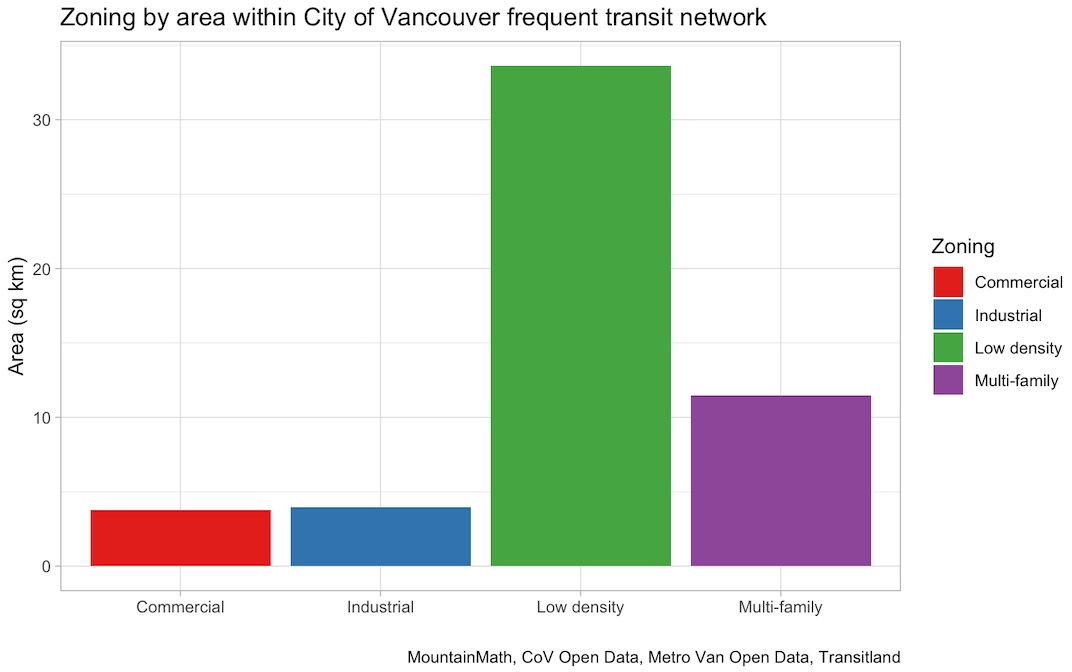Most of Vancouver's frequent transit network is surrounded by low-density zoning

A new analysis from the data miners at Mountain Doodles quantifies exactly how much of Vancouver’s zoning around the frequent public transit network is surrounded low-density designations.
See also
- City of Vancouver's new citywide planning process could cost $18 million
- City of Vancouver launches planning process to densify the Broadway Corridor
- Suburban, car-dependent living is killing residents in Metro Vancouver: study
- Vancouverites don’t think their transit infrastructure was planned for the future: poll
- Young families in Metro Vancouver prioritize having homes near public transit: report
They define TransLink’s frequent transit network (FTN) as areas around stations and stops that are served by public transit with frequencies of no longer than every 16 to 20 minutes during 6 am to 9 pm weekdays, 7 am to 9 pm Saturdays, and 8 am to 9 pm Sundays and holidays.
Only residential, commercial, industrial, and undeveloped/classified lots are covered in this analysis:

Zoning around Vancouver’s frequent transit network. (MountainMath)

Zoning around Vancouver’s frequent transit network. (MountainMath)
“This shows very clearly how far off the claim that areas in our frequent transit network are ‘mostly upzoned already’ really is,” wrote MountainMath’s Jens von Bergmann, adding that this is “another manifestation of the loss of social welfare due to overly restrictive land use planning, which forces people to live further away from jobs and amenities.”
At the same time, he notes, “this illustrates well how good the coverage of our current frequent transit network within the City of Vancouver already is. And as transit keeps improving, hopefully we will be able to fill in the remaining gaps.”
Large swaths of the FTN are surrounded by low-density housing, predominantly single-family dwellings.
In particular, areas around several SkyTrain stations built more than three decades ago — namely Nanaimo Station and 29th Avenue Station — have seen little change and are still surrounded by low-density housing.
And the area surrounding Commercial-Broadway Station woefully lacks the density that would be expected from being the region’s busiest transit hub.
Additionally, the areas just beyond the downtown peninsula, which are served by FTN routes, are remarkably undense; it is highly unusual to see large swaths of single-family dwellings so so close to the city centres of major urban regions.
See also
- City of Vancouver's new citywide planning process could cost $18 million
- City of Vancouver launches planning process to densify the Broadway Corridor
- Suburban, car-dependent living is killing residents in Metro Vancouver: study
- Vancouverites don’t think their transit infrastructure was planned for the future: poll
- Young families in Metro Vancouver prioritize having homes near public transit: report

